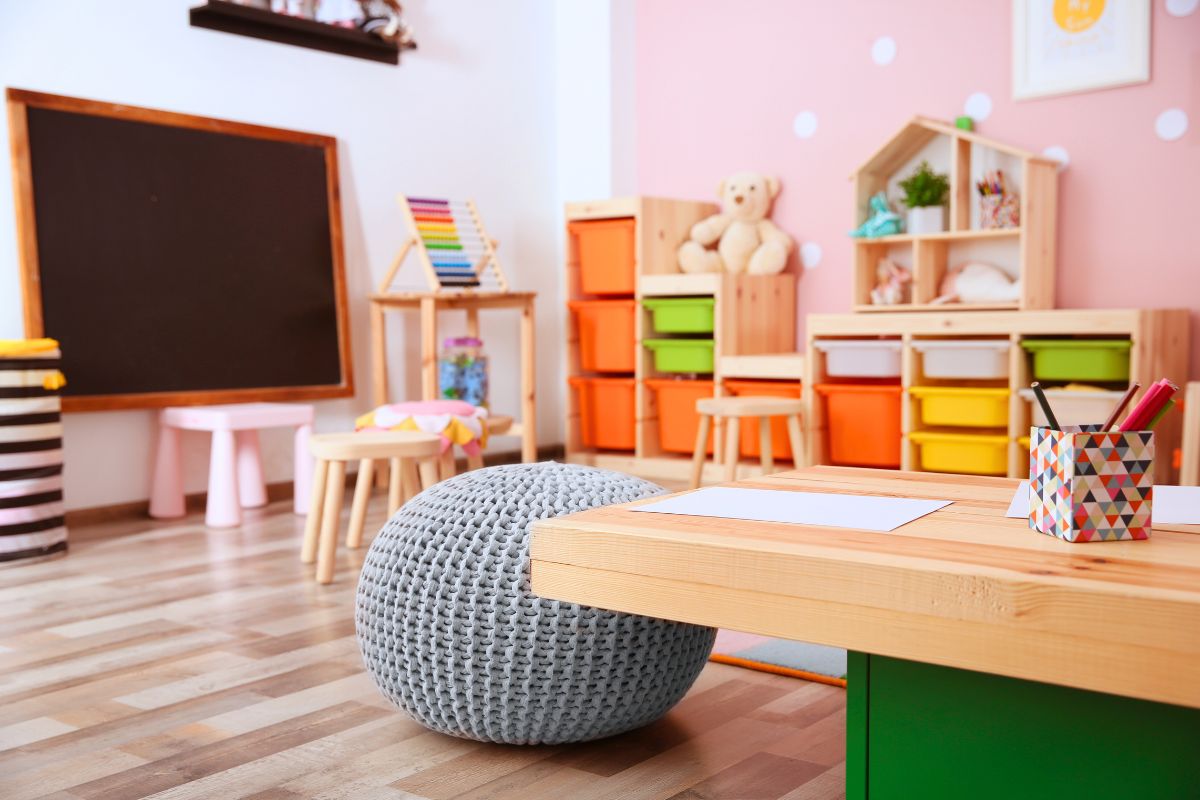Creating a Montessori playroom offers a unique blend of tranquility and stimulation, ideal for nurturing young minds. This special space, inspired by Dr. Maria Montessori’s educational philosophy, is designed to cater to the evolving needs and interests of children, fostering their innate love for learning and exploration.
From infants to toddlers, Montessori playrooms are meticulously organized to encourage sensory experiences, enhance fine motor skills, and support the initial steps toward independence. The essence of such a room lies in its focus on freedom, simplicity, and individual learning journeys, making every interaction an opportunity for growth. This guide aims to simplify the process of setting up a Montessori playroom, ensuring it becomes a functional, inviting space that both children and parents will adore.
Best Advice for Setting Up a Functional Montessori Playroom
Creating a Montessori playroom at home is a wonderful way to support your child’s natural curiosity and love for learning. Drawing from my own experience as a parent applying Montessori principles at home, here are eight practical tips to help you set up a functional and inviting space for your little ones.
Tip 1: Creating a Child-Centric Layout
Designing the room from your child’s perspective is crucial. Imagine the world from their height and viewpoint. The goal is to make the room not just accessible but also a place that invites them to explore. Low shelves are pivotal because they allow children to see, choose, and return toys independently, promoting a sense of autonomy. Ensure that the layout is open, with enough space for movement, and devoid of hazards. It’s about creating a safe, welcoming environment where children feel encouraged to explore, learn, and grow at their pace.
Tip 2: Selecting Age-Appropriate Montessori Materials
Choosing materials that resonate with your child’s current developmental stage is essential for their growth and curiosity. For infants, sensory-based items like textured balls, soft blocks, and wooden puzzles stimulate their senses and fine motor skills. As children grow into toddlers and preschoolers, introduce items that offer a bit more complexity to aid in problem-solving and cognitive development, such as shape sorters, nesting cups, and simple latch boards. These materials should challenge them just enough to keep them engaged without causing frustration.
Tip 3: Fostering Independence with Accessible Shelves and Storage
Independence is a cornerstone of Montessori philosophy. By ensuring that all toys and materials are within easy reach, children learn to manage their resources. Open shelving not only makes items accessible but also allows children to make choices about what they want to play with, fostering decision-making skills. Teaching them to return items after use instills a sense of responsibility and orderliness.
Tip 4: Incorporating Nature and Real-Life Experiences
Integrating elements of nature and real-life objects into the playroom enriches a child’s learning experience. A small indoor plant that a child can water, or a collection of natural materials like stones, leaves, and shells, can spark curiosity about the natural world. Real-life items such as a toy kitchen, a child-sized broom, or a small gardening set encourage practical life skills and imaginative play, bridging the gap between learning and real-world application.
Tip 5: Ensuring a Safe and Secure Environment
Safety cannot be overstated. All furniture should be sturdy and appropriately anchored to prevent tipping. Toys and materials should be non-toxic and without small parts that could pose a choking hazard for younger children. It’s important to conduct regular safety audits of the playroom to identify and mitigate potential risks, ensuring a secure environment for your child to explore freely.
Tip 6: Using Neutral Colors and Natural Light
A calming environment is more conducive to focused play and learning. Neutral colors and natural materials can reduce overstimulation, helping children to concentrate better on their activities. Maximizing natural light not only enhances the aesthetic of the room but also provides a healthy environment for play and learning, making the playroom a more vibrant and inviting space.
Tip 7: Rotating Toys and Materials Regularly
Children’s interests and developmental needs change rapidly. Regularly rotating toys keeps the environment fresh and engaging, rekindling their curiosity and interest in exploring different materials. This approach also prevents the accumulation of too many toys, which can be overwhelming and counterproductive to focused play. Rotation should be thoughtful, considering what skills and interests are currently emerging for your child.
Tip 8: Involving Your Child in the Setup and Maintenance
Involvement in the setup and upkeep of the playroom empowers children, giving them a stake in their environment. This can be as simple as letting them decide where to place certain items or involving them in the cleaning process. Such participation not only enhances their sense of ownership but also teaches them valuable life skills in organization and care for their surroundings.
Implementing these tips can help create and design a functional Montessori playroom that is not just a space for play but a dynamic learning environment that adapts to the growing needs of your child, fostering independence, curiosity, and a love for learning.
Implementing Montessori Principles at Home
Adopting a Montessori playroom at home extends beyond physical arrangement—it’s about embracing an ethos that values the child’s natural curiosity and capacity for learning. This involves providing materials that resonate with the child’s current interests and developmental needs, offering them the liberty to explore at their own pace within a supportive and enriching environment.
The Role of the Adult in a Montessori Setup
In this child-centered space, adults take on a supportive role that emphasizes observation and facilitation over direct instruction. The aim is to create a setting where children are encouraged to discover, choose, and engage with materials independently. This approach promotes self-directed learning and the development of critical thinking and problem-solving skills. Adults guide, provide encouragement, and intervene only when necessary to support the child’s exploration and growth. This dynamic fosters a sense of independence, confidence, and a deep-seated love for discovery among children.


